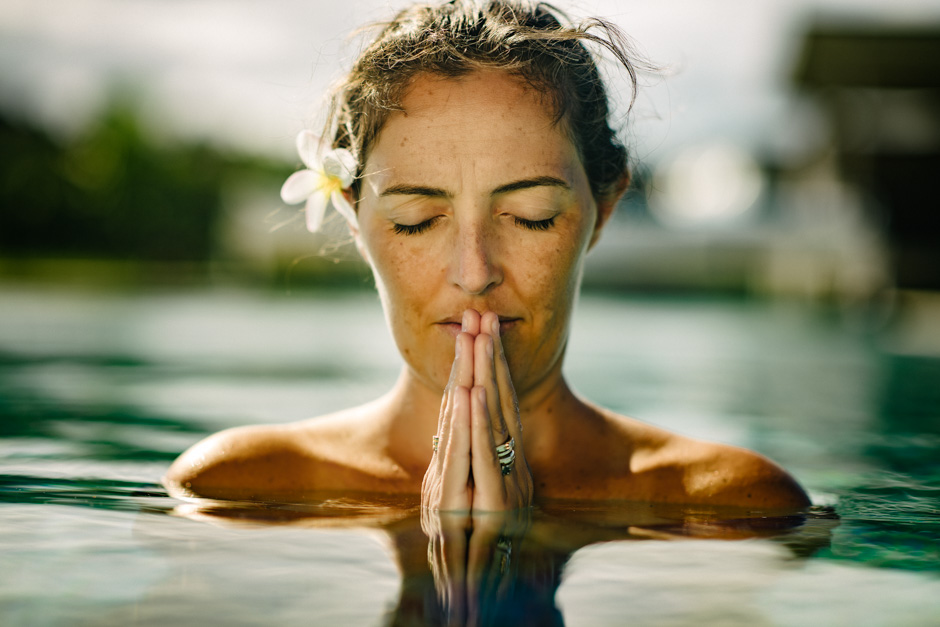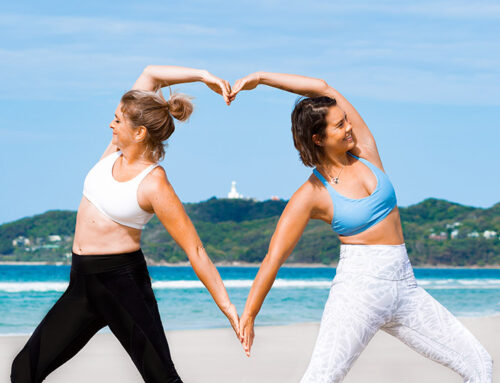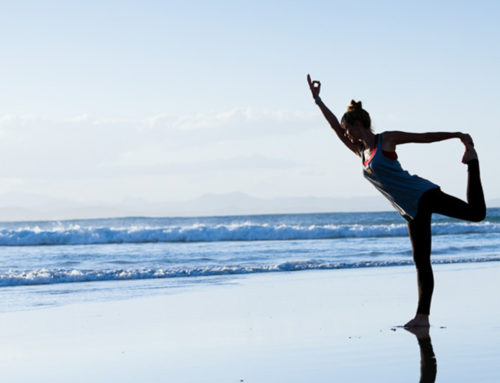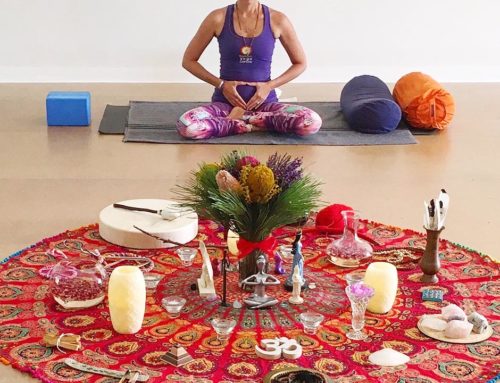Based on Tabata Ogilvie’s Women’s Retreat session, written by Caitlin Harris
Traditionally, Yoga was a male orientated practice, with teachings being passed on from male master to male students. Nowadays, up to 85% of yoga students are women, compared to 15% male, in Australia. Nearly every lineage of yoga has come from male teachers or masters, so it could be argued that traditional yoga was not designed for a woman’s body. Women should certainly consider the stage in their monthly cycle and / or their life when practising yoga. This is important, not just for all women to know, but also yoga teachers, as certain postures are beneficial for women at different stages of the cycle and of life.
Generally, hip openers, grounding postures, twists and inversions are good for women’s health. Hip openers such as Baddha Konasana and Eka Pada Rajakapotasana help to increase blood flow and circulation into the pelvis and womb space which is good for reproductive health. Standing postures such as Vrksasana and Virabhadrasana help to strengthen the legs and provide a sense of grounding. Twists such as Ardha Matsyendrasana help to massage and bring fresh blood and oxygen into the reproductive organs, and inversions such as Salamba Sarvangasana and Viparita Karani help to balance hormones, regulate metabolism and rejuvenate the adrenals.
Menstruation
During menstruation, you should avoid doing strenuous yoga. It is best to avoid inversions to help facilitate apana vayu (downward movement), and you should also avoid postures on your stomach, strong backbends or twists and standing asanas.
Pelvic opening poses such as Baddha Konasana help to increase circulation in the pelvic region, forward folds such as Balasana, Paschimottanasana and Janu Sirasana can help massage the reproductive organs, increase blood flow, release tension from the lower back; and gentle twists such as Ardha Matsyendrasana 3 (open twist variation) can help to stimulate blood flow and remove obstructions. Focus on restorative yoga, seated asanas, soft pranayama, and use lots of props!
Pregnancy
It can be hard work growing a little human, so try not to practice too strenuously when you are pregnant. The relaxin hormone relaxes ligaments and the pelvis preparing it for childbirth, so be careful not to overstretch during your pregnancy. You should avoid prone postures, or compression of your stomach, avoid lying flat on your back (prop yourself up with a block and bolster during Savasana) and always roll over to the left side to avoid compression of the Vena Cava nerve. You want to focus on opening the pelvic area with hip opening postures such as Baddha Konasana; strengthen the legs and shoulders with standing postures such as Virabhadrasana 1 and 2; and focus on pranayama breathing exercises which will help you stay calm during your birth. Opt for a more restorative practice and enjoy the rest before your little bundle arrives!
Menopause
During menopause, your hormones and emotions can be a roller-coaster! Your body is changing, you may begin to lose muscle mass and bone density. You should focus on strengthening postures such as Virabhadrasana 1 and 2, Vrksasana to help keep you balanced and supported inversions like Salamba Sarvangasana to help regulate your hormones. Cooling and calming forward folds such as Uttanasana or Prasarita Padottanasana can help with the hot flushes!
Women’s Health and Yoga Retreats
Dates
Register
September 13 - 15, 2024
Register Now
March 14 - 16, 2025
Register Now
June 13 - 15, 2025
Register Now
September 19 - 21, 2025
Register Now
November 14 - 16, 2025
Register Now
Our Women’s Health and Yoga Retreats are taught by women, for women. Learn more here. Or click here for general information on our yoga retreats.






